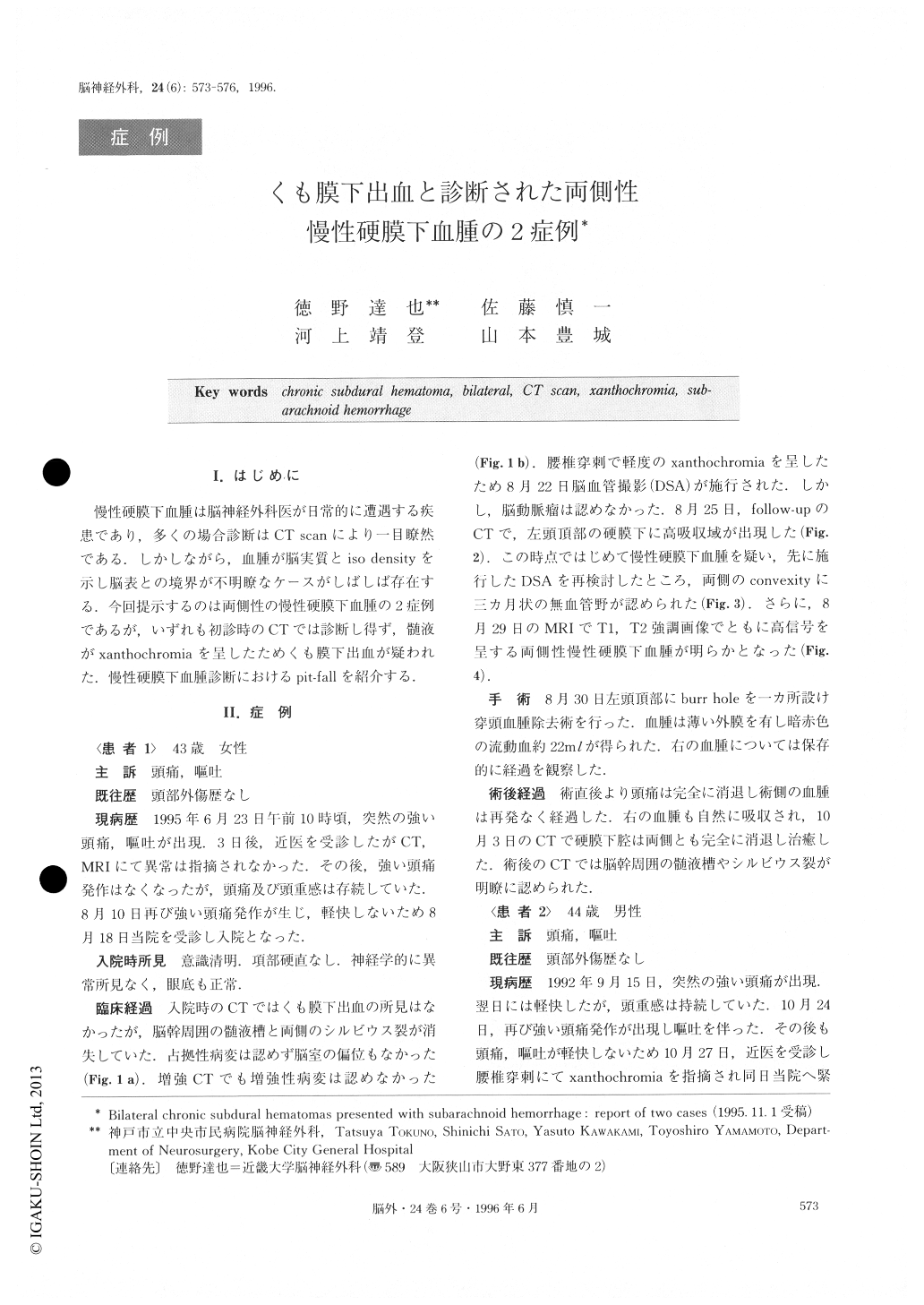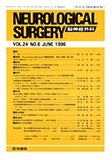Japanese
English
- 有料閲覧
- Abstract 文献概要
- 1ページ目 Look Inside
I.はじめに
慢性硬膜下血腫は脳神経外科医が日常的に遭遇する疾患であり,多くの場合診断はCT scanにより一目瞭然である.しかしながら,血腫が脳実質とiso densityを示し脳表との境界が不明瞭なケースがしばしば存在する.今回提示するのは両側性の慢性硬膜下血腫の2症例であるが,いずれも初診時のCTでは診断し得ず,髄液がxanthochromiaを呈したためくも膜下出血が疑われた.慢性硬膜下血腫診断におけるpit-fallを紹介する.
Computed tomography (CT) findings of chronic sub-dural hematomas are usually diagnostic, unless hemato-mas are isodense and bilateral. The authors report two cases of bilateral chronic subdural hematomas, in which CT scans on admission were both misdiagnosed as de-layed subarachnoid hemorrhage (SAH).
The first case was a 43-year-old woman who suffered from a sudden onset of headache and nausea. She had no past history of head injury. CT scans on admission did not clearly reveal the Sylvian fissures and the mesencephalic cistern, without any mass effects. A lum-bar puncture demonstrated xanthochromic cerebrospin-al fluid (CSF), which was considered to be responsible for her headache. Cerebral angiography performed on day 4 failed to demonstrate any cerebral vascular dis-orders. Follow-up CT scans on day 7 demonstrated a high density lesion in the left subdural space. Magnetic resonance images (MRIs) confirmed a diagnosis of bi-lateral chronic subdural hematomas. Removal of the hematomas cleared all signs and symptoms smoothly. The second case was a 44-year-old man who was re-ferred from another hospital because of xanthochromic CSF found by lumbar puncture. He began to suffer headache and be subject to vomiting 6 weeks earlier and these symptoms were still present on the day of admission. CT scans did not clearly show the cerebral cisterns without mass effects. Because the second lum-bar puncture showed xanthochromic CSF again, SAH from aneurysm was suspected. However, emergency cerebral angiography failed to demonstrate cerebral aneurysms. MRI performed two days later demon-strated bilateral chronic subdural hematomas. Follow-ing surgery, the patient improved immediately and was discharged from hospital without any complications. In both cases, a retrospective study of the angio-grams revealed the evidence of bilateral avascular areas over the convexities in the venous phase. The reason why these subdural hematomas were missed at the time of angiography was due to too much attention being paid to the arterial phase in an effort aimed only at identifying cerebral aneurysms. There are no reports of chronic subdural hematoma which demonstrated sudden onset of headache associated with xanthochro-mic CSF.

Copyright © 1996, Igaku-Shoin Ltd. All rights reserved.


